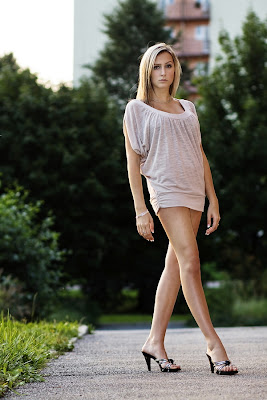The Johns Hopkins Center for Psychedelic and Consciousness Research is leading the way in exploring innovative treatments using psilocybin. The research supporting psilocybin’s use in this context has been growing for a while now. One of the most recent such studies, published in Scientific Reports on April 7, looked at data from 214,505 U.S. adults in the National Survey on Drug Use and Health (NSDUH) from 2015 to 2019, and found an association between past use of psilocybin—at any time in their lives—and a reduced risk of opioid use disorder. Information on the use of psychedelic and dissociative drugs is collected by several national surveys. These surveys use the terms “hallucinogen” and “hallucinogen use disorder” and data from those surveys are reported below.
Why might psilocybin help treat addiction?
- People with uncontrolled hypertension are advised to abstain as well, because psilocybin is known to raise blood pressure.
- In the 1990s the first study of the use of ketamine combined with therapy in the treatment of alcohol addiction took place in Russia.
- Furthermore, it is plausible to speculate that differences in SES between the groups may be attributed to geographical factors, which was not directly measured in the survey study.
- After swallowing the pill, she put on an eye-mask, lay on a couch and went on a psychedelic trip with two therapists nearby for the next five hours.
However, in the 1970s they were categorized as schedule I controlled substances, which are said to have “no currently accepted medical use and a high potential for abuse”; this blocked mainstream research on these compounds for decades. This present study compares mental health and Big Five personality traits between recreational psychedelic users and non-user controls, assessing mental health differences in terms of depression, insomnia, substance use, dissociation. In addition, we test whether differences in personality traits may explain mental health differences. No studies were identified evaluating the efficacy of psilocybin in patients with cocaine use disorder. A pilot double-blind, placebo-controlled RCT assessing the efficacy of psilocybin for cocaine use disorder and MRI assessment to determine a potential biological mechanism of psilocybin’s effect is ongoing.
How do I participate in a study?
However, some features of psychedelics, including their long and complicated history, raise unique concerns that could exacerbate pre-existing problems with patenting medical products. At the same time, the sudden interest in patenting psychedelics has prompted criticism from stakeholders, including patient advocates, scientists, journalists, lawyers and Indigenous communities16. Some claim patenting psychedelics exploits the traditional knowledge of Indigenous communities without acknowledgment or compensation, a practice called ‘biopiracy’. The US Congress can amend the Controlled Substances Act, changing the categorization of any controlled substance9. Alternatively, the president or the federal attorney general could command the DEA to reschedule a substance.
Associated Data
This demonstrates pharmacological interference with memory reconsolidation may allow overwriting of maladaptive drinking memories with clinical benefits. Psilocybin is the main psychoactive compound in ‘magic mushrooms.’ After the observation in 1953 in Mexico of ritual practices involving the ingestion the alcohol-depression connection of such mushrooms, psilocybin was chemically characterized and synthesized in 1958. Since then psilocybin has been explored for therapeutic uses across a range of psychiatric disorders (60). Marks said there are efforts in some cities and states across the U.S. to decriminalize psilocybin.
Almost all psychedelic research in the U.S. came to an abrupt halt after the U.S. stepped up regulation of pharmaceutical research in the 1960s and criminalized the manufacturing and possession of psilocybin and other psychedelics. Scientists are still “reopening the books” on psychedelics to make up for decades of stalled research, says Garcia-Romeu. At this point, only a relatively few clinical trials have been published on psilocybin as a treatment for any type of substance use disorder, and many of those trials have involved a very small number of participants.
Such studies could facilitate the development of personalized medicines in the treatment of behavioral health disorders and provide needed data on potential abuse or side effects. Additionally, future studies can increase generalizability by recruiting subjects from diverse populations and expanding the sample size. As mentioned, most studies recruited relatively small samples which prevents applicability in other research settings. Lysergic acid diethylamide (LSD) was first synthesized in 1938, though its psychological properties were not discovered until 1943 (15).
It is important to note that the literature on human neurobiological psychedelic mechanisms in addiction is sparse. Modern day clinical interventional studies of classic and non-classic psychedelics in addiction. In sum, naturalistic and observational research spanning survey-based studies, retrospective data analysis and prospective case series generally indicate a positive association between the use of psychedelic substances and reductions in the incidence of addiction and substance abuse or misuse. Another long-term effect is a phenomenon called hallucinogen persisting perception disorder (HPPD).
Psychedelic therapy has witnessed a resurgence in interest in the last decade from the scientific and medical communities with evidence now building for its safety and efficacy in treating a range of psychiatric disorders including addiction. In this review we will chart the research investigating the role of these interventions in individuals with addiction beginning with an overview of the current socioeconomic impact of addiction, treatment options, and outcomes. We will start by examining historical studies from the first psychedelic research era of the mid-late 1900s, followed by an overview of the available real-world evidence gathered from naturalistic, observational, and survey-based studies. We will then cover modern-day clinical trials of psychedelic therapies in addiction from first-in-human to phase II clinical trials.
People with psychotic disorders such as schizophrenia (or a strong predisposition for them) are generally advised against taking the hallucinogen. People with uncontrolled hypertension are advised to abstain as well, because psilocybin is known to raise blood pressure. Although it appears to be one of the safest “recreational” drugs and is not considered addictive, there have been reports associating it with deaths—but these may have been the result of multiple drugs, impure substances or underlying medical issues. In the smoking study, a third of participants experienced some fear or anxiety at a high dose of the psilocybin, Johnson says. But he adds that the risks can be minimized by carefully selecting participants and administering the drug in a controlled environment. The latter proposed working mechanism seems especially important in SUD as the mystical-type experience seems to induce behavioral change in a patient with SUD.
Each link will provide additional information about the study and instructions on how to apply. While the woman had been treated for mild depression for over 10 years, she’d previously maintained a rich social life and fulfilling career. This — the psychosis followed by the deep depression — was something completely different. While drugs like ketamine and psilocybin are largely considered safe, here’s what to know about who should be cautious.
Utilizing this radiotracer in a multimodal fMRI-PET study with behaviorally salient, dopamine-enhancing tasks such as monetary reward paradigms, that probe addiction-related brain processes, could theoretically release dopamine in the living human brain. The extent to which psychedelic therapy remediates the observable neurotransmitter and functional deficits and their relationship to clinical outcomes would offer unparalleled insight into this intervention. This would provide evidence for the ‘molecular-functional-clinical’ translational explanatory bridge, which so far in psychiatric psychopharmacology research has not been conducted, alcohol withdrawal and would provide the most advanced biopsychosocial theory of psychedelics in treating addiction. Behaviors elicited by individuals with addiction can be characterized as impulsive, which describes the lack of inhibitory control and manifests as non-premeditated action (108). Increases in trait impulsivity have been consistently found in individuals with addictions compared to healthy controls when using validated clinical impulsivity scales (109). Choice impulsivity has also been found to be related to altered neural processing in regions of the reward system such as the VS, ACC, OFC and dorsolateral prefrontal cortex (DLPFC) (110).
This network of regions is considered to support one’s socioemotional functions by integrating visceral and sensory information (132, 133), as well as playing an intrinsic role in directing one’s attention toward salient stimuli (134). Notably, there is a significant anatomical overlap between the SN and the mesocorticolimbic system, with recent preclinical work indicating that the firing of mesolimbic dopamine neurons may activate nodes of the salience network (135). “In light of the federal illegality of psilocybin and ibogaine, there are many unresolved legal questions, some challenging legal questions and questions of potential liability, as well for licensed healthcare professionals who choose to get involved in these programs,” Marks said. Despite their general safety, psychedelics pose a number of risks and dangers, which increase with higher dosages. As psychedelics can produce euphoria and a feeling of detachment from the surroundings, some people use them recreationally to reduce feelings of stress.
The original contributions presented in this study are included in the article/Supplementary material, further inquiries can be directed to the corresponding author. Ralph Metzner, one of the key figures in the first wave of psychedelic research, in a seminal theorem titled ‘Addiction and transcendence as altered states of consciousness,’ describes addiction as a narrowed state of consciousness, depicted as a 15-degree window of a 360-degree circle (77). Panelist Mark Guckel describes how psychedelics helped him overcome an addiction to crack. After reminding the audience that none of the information shared in the panel should be considered legal or medical advice, Tabashneck offered a word of caution about psychedelics. We also know that a lot of the treatments that we have are not particularly effective,” said Tabashneck, senior fellow of law and applied neuroscience, a collaboration between the Center for Law, Brain & Behavior and the Petrie-Flom Center.
This involves flashbacks of a prior drug experience that can happen without warning and cause significant distress or impairment. Indeed, researchers are hopeful, based on their breakthrough findings, that it may soon be possible to design novel psychedelic-derived medications that don’t possess the hallucinogenic properties of current drugs. Raising their expectations is the discovery that their 2c-b guide lead compound—the most 5-HT1A-selective analog to 5-MeO-DMT—showed antidepressant effects without the 5-HT2A-related hallucinations. Most people Londoño interviews in “Trippy” seek “bliss,” not lifesaving measures to give them a chance at basic functioning. For decades research on ibogaine has been stymied by its classification as a Schedule I drug, the most tightly regulated category.









